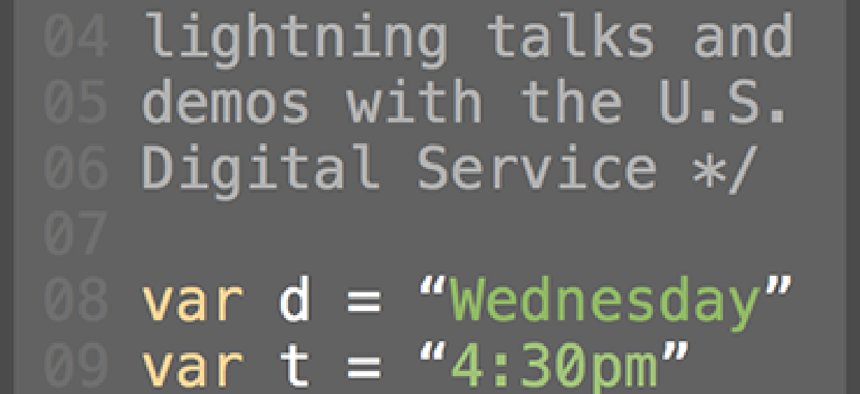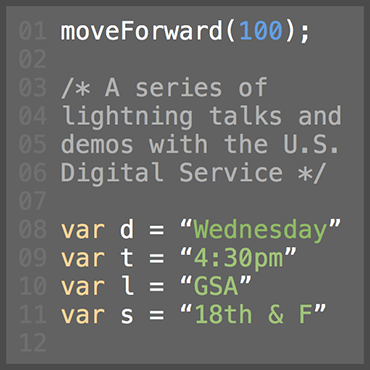OSTP, USDS, 18F gather the techies to talk data and design

The inaugural get-together of "moveForward(100)" gave Internet specialists a platform for sharing successes and upcoming projects.

The inaugural get-together of “moveForward(100)” gave Internet specialists a platform to share successes and upcoming projects.
On April 29, several dozen techies from all corners of the federal government met in a lime green-accented room at the General Services Administration headquarters to talk shop. Their mission: Unleash government data in useful, usable ways and create user interfaces that don't, as they put it, "fail."
More of a pep rally than a support group, the inaugural get-together was dubbed moveForward(100) — named after President Barack Obama's first line of JavaScript -- and gave Internet specialists a platform for sharing their successes and upcoming projects.
"Technical people have been kind of buried," U.S. Chief Technology Officer Megan Smith told the crowd. "Our government brings forward the very best economists, legislators ... writers, the best scientists, yet we have been ignoring the tech revolution in a way that really has been debilitating for our government."
The event was spearheaded by the White House Office of Science and Technology Policy, the U.S. Digital Service and 18F, GSA's year-old experiment with bringing start-up energy and creativity to the federal space. The presentations ran the federal gamut.
The team behind the sleek, user-friendly overhaul of the Citizenship and Immigration Services website shared the rigorous customer survey and design tests that went into the transformation. Another teams demo'd a similar redesign -- launch TBA -- for the Federal Election Commission's notoriously bad site.
On the open data front, a team from the National Oceanic and Atmospheric Administration talked up the agency's big data project, data-alliance.noaa.gov, which seeks the collaboration of private companies to better harness NOAA's hundreds of petabytes of data.
Teams also shared their work with local law enforcement across the country to release data troves relating to police-involved shootings -- a particularly trendy topic this week -- community engagement and more.
In both the law enforcement and NOAA cases, the data could be used to recognize patterns and save lives -- it just has to get into the right hands.
Smith recalled the words of the Dallas police chief working to provide full and open department data to his city: "The data belongs to the American people. I'm just the steward."
Organizers said they hope to have a moveForward(100) powwow regularly, every 100 days or perhaps even more frequently.
NEXT STORY: State to set up analytics office


